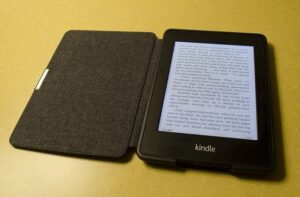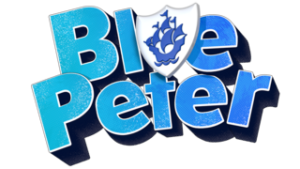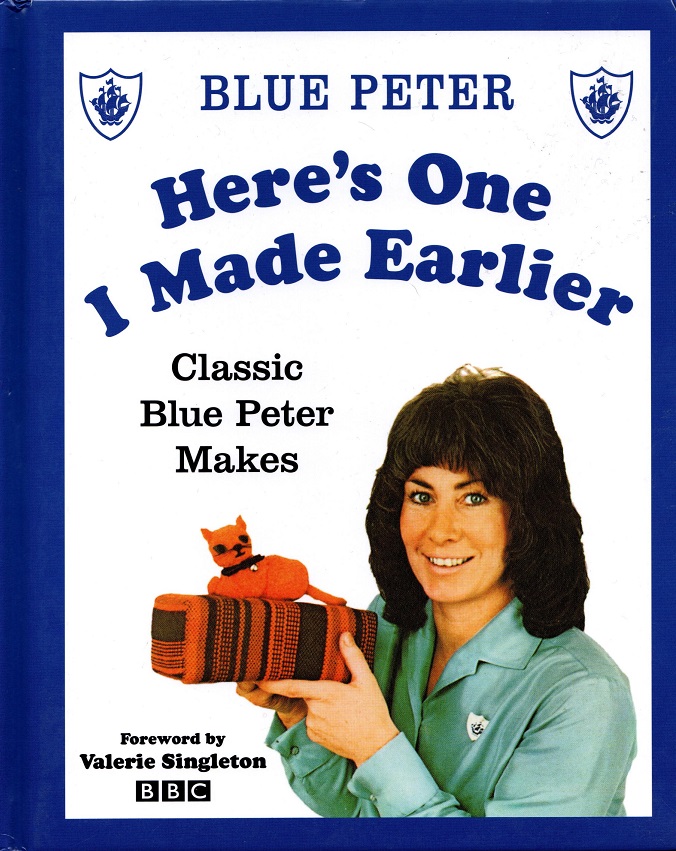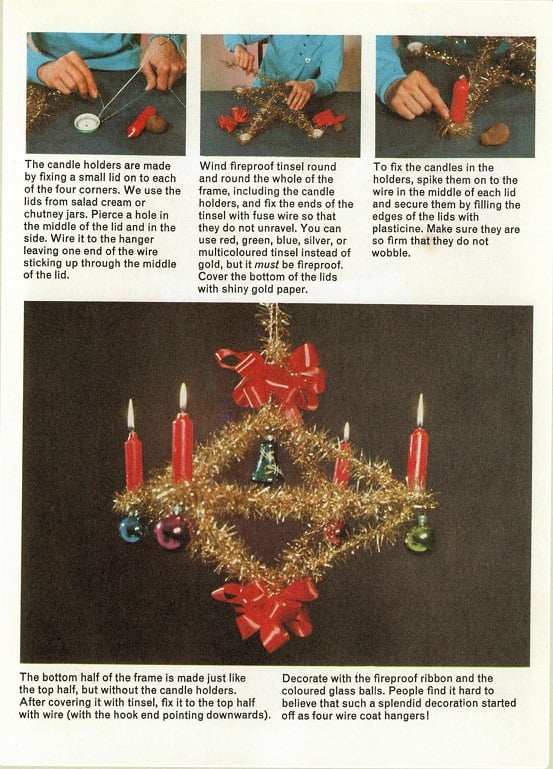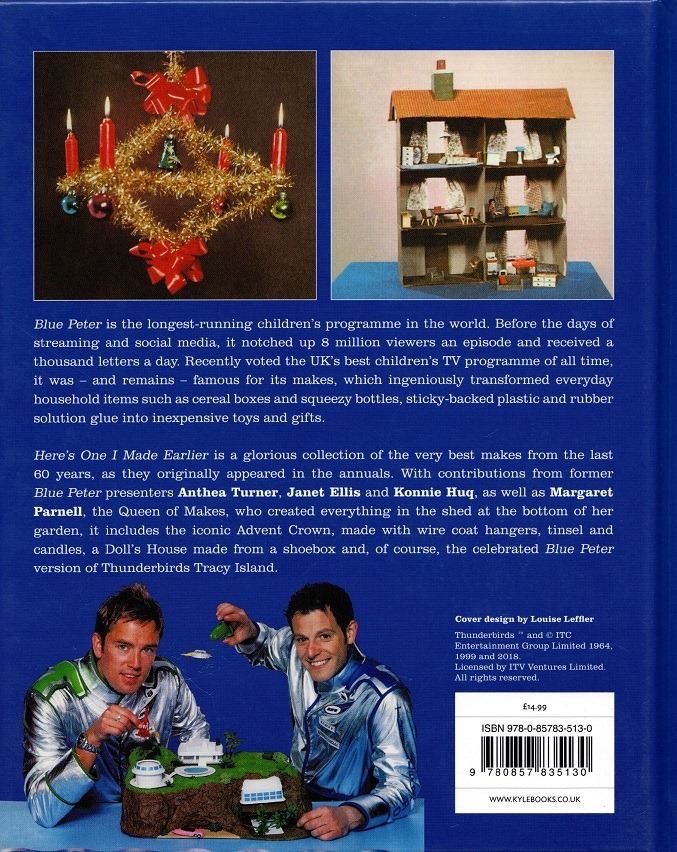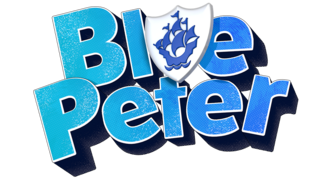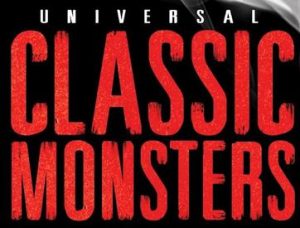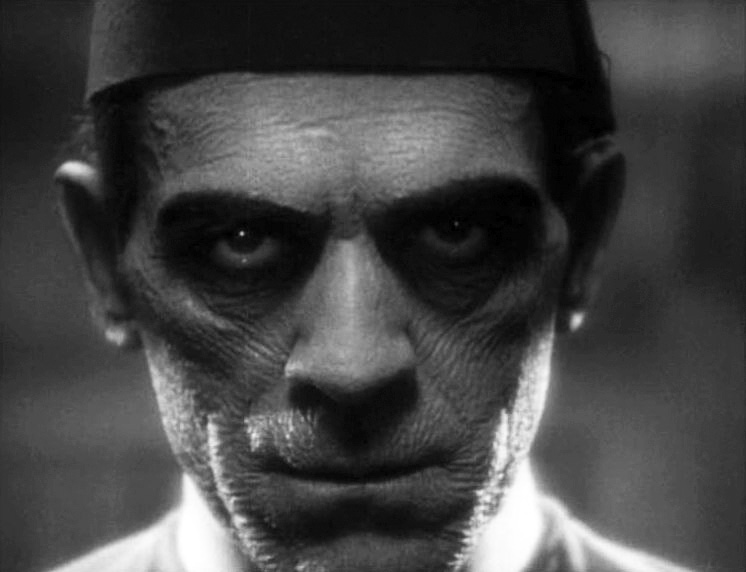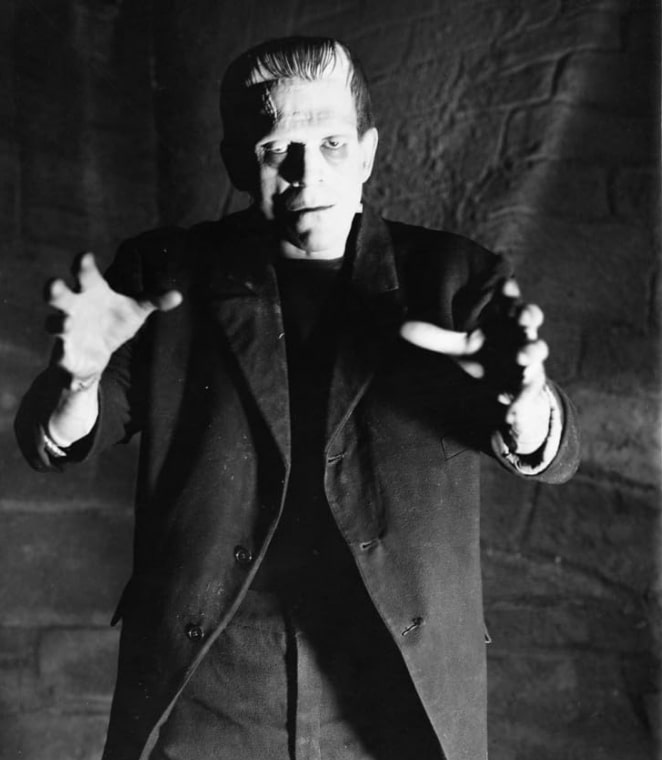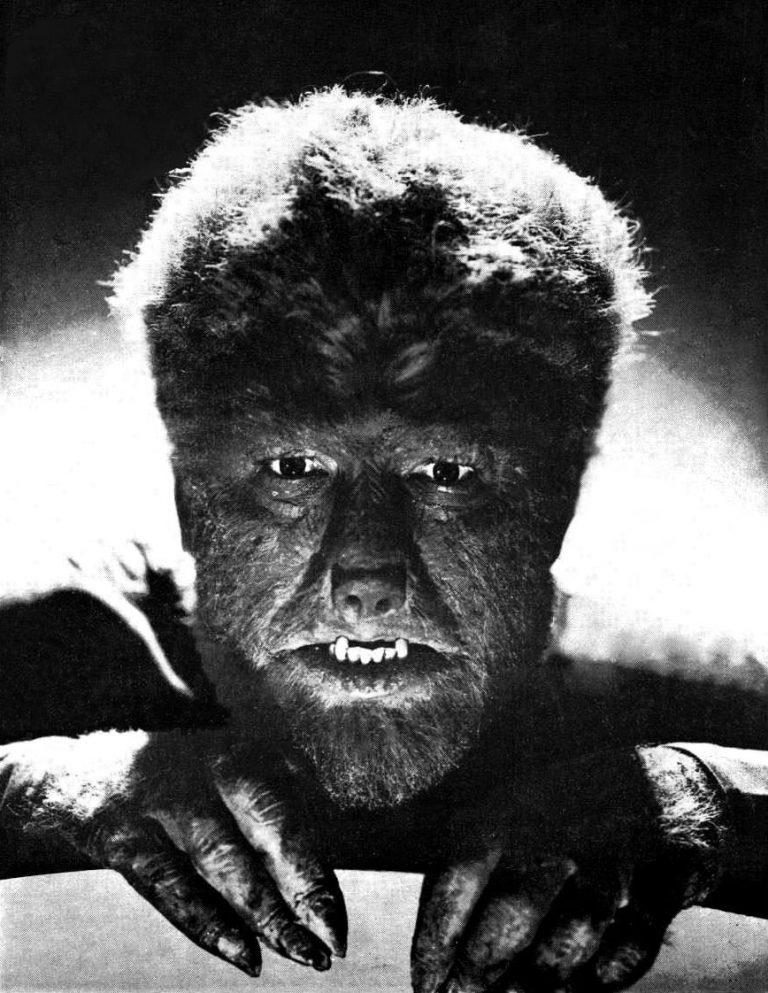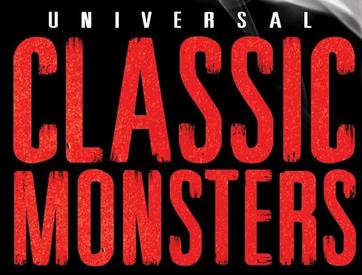
I am English, NOT British, Not European, ENGLISH, AND PROUD and I class myself as an English patriot.
You can read more blog articles about England and the English, like the one on here, via my English Pride Index below and click the link to get back to the English Pride page.
The Culture Of England
The culture of England is defined by the cultural norms of England and the English people. Owing to England’s influential position within the United Kingdom it can sometimes be difficult to differentiate English culture from the culture of the United Kingdom as a whole. However, since Anglo-Saxon times, England has had its own unique culture, apart from Welsh, Scottish or Northern Irish culture.
As the birthplace of the Industrial Revolution, many of the world’s acclaimed scientists and technological advancements originated from England. England has also played an important role in cinema, literature, technology, engineering, democracy, philosophy, music, science and mathematics. England has long been known for the accomplishments of a wide variety of literature and poetry.
Humour, tradition, and good manners are characteristics commonly associated with being English. The secretary of state for digital, culture, media and sport is the government minister responsible for the cultural life of England.
The Architecture Of England
Many ancient standing stone monuments were erected during the prehistoric period; amongst the best known are Stonehenge, Avebury, Devil’s Arrows, Rudston Monolith and Castlerigg. With the introduction of Ancient Roman architecture, there was a development of basilicas, baths, amphitheatres, triumphal arches, villas, Roman temples, Roman roads, Roman forts, stockades and aqueducts. It was the Romans who founded the first cities and towns such as London, Bath, York, Chester and St Albans. Perhaps the best-known example is Hadrian’s Wall stretching right across northern England. Another well-preserved example is the Roman Baths at Bath, Somerset.
English architecture begins with the architecture of the Anglo-Saxons. At least fifty surviving English churches are of Anglo-Saxon origin, although in some cases the Anglo-Saxon part is small and much-altered. All except one timber church are built of stone or brick, and in some cases show evidence of reused Roman work. The architectural character of Anglo-Saxon ecclesiastical buildings ranges from Coptic-influenced architecture in the early period, through Early Christian basilica influenced architecture, to (in the later Anglo-Saxon period) an architecture characterised by pilaster-strips, blank arcading, baluster shafts and triangular-headed openings.
Many cathedrals of England are ancient, dating from as far back as around 700. They are a major aspect of the country’s artistic heritage. Medieval Christianity included the veneration of saints, with pilgrimages to places where particular saints’ relics were interred. The possession of the relics of a popular saint was a source of funds for an individual church, as the faithful made donations and benefices in the hope that they might receive spiritual aid, a blessing or a healing from the presence of the physical remains of the holy person. Among those churches to benefit in particular were St Albans Abbey, which contained the relics of England’s first Christian martyr; Ripon with the shrine of its founder St. Wilfrid; Durham, which was built to house the body of Saints Cuthbert of Lindisfarne and Aidan; Ely with the shrine of St. Ethelreda; Westminster Abbey with the magnificent shrine of its founder St. Edward the Confessor; at Chichester, the remains of St. Richard; and at Winchester, those of St. Swithun.
All these saints brought pilgrims to their churches, but among them, the most renowned was Thomas Becket, the late Archbishop of Canterbury, assassinated by henchmen of King Henry II in 1170. As a place of pilgrimage, Canterbury was, in the 13th century, second only to Santiago de Compostela. In the 1170s Gothic architecture was introduced at Canterbury and Westminster Abbey. Over the next 400 years, it developed in England, sometimes in parallel with and influenced by Continental forms, but generally with great local diversity and originality.
Following the Norman Conquest, Romanesque architecture (known here as Norman architecture) superseded Anglo-Saxon architecture; later there was a period of transition into English Gothic architecture (of which there are three periods, Early English, Decorated, and Perpendicular). Norman architecture was built on a vast scale from the 11th century onwards in the form of castles and churches to help impose Norman authority upon their dominion. Many castles remain from the medieval period, such as Windsor Castle (longest-occupied castle in Europe), Bodiam Castle (a moated castle), Tower of London, and Warwick Castle. Expanding on the Norman base there was also castles, palaces, great houses, universities and parish churches.
English Gothic architecture flourished from the 12th to the early 16th century, and famous examples include Westminster Abbey, the traditional place of coronation for the British monarch, which also has a long tradition as a venue for royal weddings, Canterbury Cathedral, one of the oldest and most famous Christian structures in England; Salisbury Cathedral, which has the tallest church spire in the UK; and York Minster, which is the largest Gothic cathedral in Northern Europe.
The secular medieval architecture throughout England has left a legacy of large stone castles. The invention of gunpowder and canons made castles redundant, and the English Renaissance which followed facilitated the development of new artistic styles for domestic architecture, notably Tudor, Elizabethan, Jacobean, English Baroque, Queen Anne and Palladian. Architecture during the Tudor dynasty flourished with magnificent royal palaces, such as Nonsuch Palace, Palace of Placentia, Hampton Court Palace, Hatfield House, Richmond Palace and Palace of Beaulieu.
One of the most acclaimed English architects was Sir Christopher Wren. He was employed by King Charles II to design and rebuild London and many of its ruined ancient churches following the Great Fire of London in 1666. Georgian and Neoclassical architecture advanced after the Age of Enlightenment, evoking achievements in elegant architecture and city planning; the Royal Crescent at Bath is one of the best examples of this. The Regency of George IV is noted for its elegance and achievements in architecture and urban planning. Regency style is also applied to interior design and decorative arts of the period, typified by elegant furniture and vertically striped wallpaper, and to styles of clothing; for men, as typified by the dandy Beau Brummell and for women the Empire silhouette. In early modern times, there was an influence from Renaissance architecture until by the 18th century. Gothic forms of architecture had been abandoned and various classical styles were adopted. During the Victorian era, Gothic Revival architecture developed in England and was preferred for many types of buildings and city planning. Victorian was widespread with vast innovations and engineering achievements (bridges, canals, railway stations, etc.).
In addition to this, around the same time, the Industrial Revolution paved the way for buildings such as The Crystal Palace. The introduction of the sheet glass method into England by the Chance Brothers in 1832 made possible the production of large sheets of cheap but strong glass, and its use in the Crystal Palace created a structure with the greatest area of glass ever seen in a building. It astonished visitors with its clear walls and ceilings that did not require interior lights. Edwardian followed in the early 20th century. Other buildings such as cathedrals and parish churches are associated with a sense of traditional Englishness, as is often the palatial ‘stately home’. Many people are interested in the English country house and the rural lifestyle, evidenced by the number of visitors to properties managed by English Heritage and the National Trust.
Landscape gardening as developed by Capability Brown set an international trend for the English garden. Gardening, and visiting gardens, are regarded as typically English pursuits. By the end of the 18th century the English garden was being imitated by the French landscape garden, and as far away as St. Petersburg, Russia, in Pavlovsk, the gardens of the future Emperor Paul. It also had a major influence on the form of the public parks and gardens which appeared around the world in the 19th century.
Inspired by the great landscape artists of the seventeenth century, the English garden presented an idealized view of nature. At large country houses, the English garden usually included lakes, sweeps of gently rolling lawns set against groves of trees, and recreations of classical temples, Gothic ruins, bridges, and other picturesque architecture, designed to recreate an idyllic pastoral landscape. The English garden was centred on the English country house, stately homes and parks. English Heritage and the National Trust preserve large gardens and landscape parks throughout the country. The RHS Chelsea Flower Show is held every year by the Royal Horticultural Society and is said to be the largest gardening show in the world.
Following the building of the world’s first seaside pier at Ryde, the pier became fashionable at seaside resorts in England during the Victorian era, peaking in the 1860s with 22 being built in that decade. A symbol of the typical English seaside holiday, by 1914 more than 100 pleasure piers were located around the UK coast. Regarded as being among the finest Victorian architecture, there are still a significant number of seaside piers of architectural merit still standing, although some have been lost, including two at Brighton in East Sussex and one at New Brighton in the Wirral. Two piers, Brighton’s now derelict West Pier and Clevedon Pier, were Grade 1 listed. The Birnbeck Pier in Weston-super-Mare is the only pier in the world linked to an island. The National Piers Society gives a figure of 55 surviving seaside piers in England.
Art And Design Of England
England has Europe’s earliest and northernmost ice-age cave art. Prehistoric art in England largely corresponds with art made elsewhere in contemporary Britain, but early medieval Anglo-Saxon art saw the development of a distinctly English style, and English art continued thereafter to have a distinct character. English art made after the formation in 1707 of the Kingdom of Great Britain may be regarded in most respects simultaneously as art of the United Kingdom. The two periods of outstanding achievement were the 7th and 8th centuries, with the metalwork and jewellery from Sutton Hoo and a series of magnificent illuminated manuscripts, and the final period after about 950, when there was a revival of English culture after the end of the Viking invasions.
As in most of Europe at the time, metalwork was the most highly regarded form of art by the Anglo-Saxons, but hardly any survives – there was enormous plundering of Anglo-Saxon churches, monasteries and the possessions of the dispossessed nobility by the new Norman rulers in their first decades, as well as the Norsemen before them, and the English Reformation after them, and most survivals were once on the continent. Anglo-Saxon taste favoured brightness and colour. Opus Anglicanum (“English work”) was recognised as the finest embroidery in Europe. Perhaps the best known piece of Anglo-Saxon art is the Bayeux Tapestry which was commissioned by a Norman patron from English artists working in the traditional Anglo-Saxon style. Anglo-Saxon artists also worked in fresco, stone, ivory and whalebone (notably the Franks Casket), metalwork (for example the Fuller brooch), glass and enamel. Medieval English painting, mainly religious, had a strong national tradition and was influential in Europe.
The English Reformation, which was antipathetic to art, not only brought this tradition to an abrupt stop but resulted in the destruction of almost all wall paintings. Only illuminated manuscripts now survive in large numbers.
There is in the art of the English Renaissance a strong interest in portraiture, and the portrait miniature was more popular in England than anywhere else. English Renaissance sculpture was mainly architectural and for monumental tombs. Interest in English landscape painting had begun to develop by the time of the 1707 Act of Union. English art was dominated by imported artists throughout much of the Renaissance, but in the 18th century, a native tradition became much admired. It is considered to be typified by landscape painting, such as the work of J.M.W. Turner and John Constable. Portraitists like Thomas Gainsborough and Joshua Reynolds are also significant.
The first famous native English portrait miniaturist is Nicholas Hilliard (c. 1537–1619), whose work was conservative in style but very sensitive to the character of the sitter; his best works are beautifully executed. The colours are opaque, and gold is used to heighten the effect, while the paintings are on card. They are often signed and have frequently also a Latin motto upon them. Hilliard worked for a while in France, and he is probably identical with the painter alluded to in 1577 as Nicholas Belliart. Hilliard was succeeded by his son Lawrence Hilliard (died 1640); his technique was similar to that of his father but bolder, and his miniatures richer in colour.
Isaac Oliver and his son Peter Oliver succeeded Hilliard. Isaac (c. 1560–1617) was the pupil of Hilliard. Peter (1594–1647) was the pupil of Isaac. The two men were the earliest to give roundness and form to the faces they painted. They signed their best works in monogram and painted not only very small miniatures, but larger ones measuring as much as 10 in × 9 in (250 mm × 230 mm). They copied for Charles I of England (1600–1649) on a small scale many of his famous pictures by the old masters. Samuel Cooper (1609–1672) was a nephew and student of the elder Hoskins and is considered the greatest English portrait miniaturist. He spent much of his time in Paris and Holland, and very little is known of his career. His work has a superb breadth and dignity and has been well called life-size work in little. His portraits of the men of the Puritan epoch are remarkable for their truth to life and strength of handling. His work is frequently signed with his initials, generally in gold, and very often with the addition of the date.
Pictorial satirist William Hogarth pioneered Western sequential art, and political illustrations in this style are often referred to as “Hogarthian”. Following Hogarth, political cartoons developed in England in the late 18th century under the direction of James Gillray. Regarded as one of the two most influential cartoonists (the other is Hogarth), Gillray has been referred to as the father of the political cartoon, with his satirical work calling the King (George III), prime ministers and generals to account. The early 19th century saw the emergence of the Norwich school of painters, the first provincial art movement outside of London. Its prominent members were “founding father” John Crome (1768–1821), John Sell Cotman (1782–1842), James Stark (1794–1859), and Joseph Stannard (1797–1830).
In England, landscapes had initially been mostly backgrounds to portraits. The English tradition was founded by Anthony van Dyck and other mostly Flemish artists working in England, but in the 18th century, the works of Claude Lorrain were keenly collected and influenced not only paintings of landscapes, but the English landscape gardens of Capability Brown and others. In the 18th century, watercolour painting, mostly of landscapes, became an English speciality, with both a buoyant market for professional works and a large number of amateur painters, many following the popular systems found in the books of Alexander Cozens and others. By the beginning of the 19th century, the English artists with the highest modern reputations were mostly dedicated landscape painters, showing the wide range of Romantic interpretations of the English landscape found in the works of John Constable and J.M.W. Turner.
During the Baroque and Rococo periods, the first major native portrait painters of the British school were English painters Thomas Gainsborough and Sir Joshua Reynolds, who also specialised in clothing their subjects in an eye-catching manner. Gainsborough’s Blue Boy is one of the most famous and recognized portraits of all time, painted with very long brushes and thin oil colour to achieve the shimmering effect of the blue costume. Gainsborough was also noted for his elaborate background settings for his subjects.
The Pre-Raphaelite Brotherhood achieved considerable influence after its foundation in 1848 with paintings that concentrated on religious, literary, and genre subjects executed in a colourful and minutely detailed style. Its artists included John Everett Millais, Dante Gabriel Rossetti and subsequently Edward Burne-Jones. Also associated with it was the designer William Morris, whose efforts to make beautiful objects affordable for everyone led to his wallpaper and tile designs to some extent defining the Victorian aesthetic and instigating the Arts and Crafts movement. The Royal Society of Arts is an organisation committed to the arts and culture.
The Royal Academy in London is a key organisation for the promotion of the visual arts in England. Major schools of art in England include the six-school University of the Arts London, which includes the Central Saint Martins College of Art and Design and Chelsea College of Art and Design; Goldsmiths, University of London; the Slade School of Fine Art (part of University College London); the Royal College of Art; and The Ruskin School of Drawing and Fine Art (part of the University of Oxford). The Courtauld Institute of Art is a leading centre for the teaching of the history of art. Important art galleries in the United Kingdom include the National Gallery, National Portrait Gallery, Tate Britain and Tate Modern (the most-visited modern art gallery in the world, with around 4.7 million visitors per year).
Heritage And Tourism Of England
A number of umbrella organisations are devoted to the preservation and public access of both natural and cultural heritage, including English Heritage and the National Trust. Membership with them, even on a temporary basis, gives priority free access to their properties thereafter.
English Heritage is a governmental body with a broad remit of managing the historic sites, artefacts and environments of England. It is currently sponsored by the Department for Digital, Culture, Media and Sport. English Heritage manages more than 400 significant buildings and monuments in England. They also maintain a register of thousands of listed buildings, those which are considered of most importance to the historic and cultural heritage of the country.
The National Trust for Places of Historic Interest or Natural Beauty is a charity that also maintains multiple sites. One of the largest landowners in the United Kingdom, the Trust owns almost 250,000 hectares of land and 780 miles of the coast. Its properties include over 500 historic houses, castles, archaeological and industrial monuments, gardens, parks and nature reserves.
17 of the 25 United Kingdom UNESCO World Heritage Sites fall within England. Some of the best known of these include Hadrian’s Wall, Stonehenge, Avebury and Associated Sites, Tower of London, Jurassic Coast, Westminster, Roman Baths in Bath, Saltaire, Ironbridge Gorge, and Studley Royal Park. The northernmost point of the Roman Empire, Hadrian’s Wall, is the largest Roman artefact anywhere: it runs a total of 73 miles in northern England.
London’s British Museum hosts a collection of more than seven million objects is one of the largest and most comprehensive in the world, sourced from every continent, illustrating and documenting the story of human culture from its beginning to the present. The library has two of the four remaining copies of the original Magna Carta (the other two copies are held in Lincoln Castle and Salisbury Cathedral) and has a room devoted solely to them. The British Library Sound Archive has over six million recordings, many from the BBC Sound Archive, including Winston Churchill’s wartime speeches.
The British Library in London is the national library and is one of the world’s largest research libraries, holding over 150 million items in all known languages and formats; including around 25 million books. The most senior art gallery is the National Gallery in Trafalgar Square, which houses a collection of over 2,300 paintings dating from the mid-13th century to 1900. The Tate galleries house the national collections of British and international modern art; they also host the famously controversial Turner Prize. The Ashmolean Museum was founded in 1677 from the personal collection of Elias Ashmole, was set up in the University of Oxford to be open to the public and is considered by some to be the first modern public museum. In 2011 there were more than 1,600 museums in England. Most museums and art galleries are free of charge.
A blue plaque, the oldest historical marker scheme in the world, is a permanent sign installed in a public place in the UK to commemorate a link between that location and a famous person or event. The scheme was the brainchild of politician William Ewart in 1863 and was initiated in 1866.
It was formally established by the Royal Society of Arts in 1867, and since 1986 has been run by English Heritage. The first plaque was unveiled in 1867 to commemorate Lord Byron at his birthplace, 24 Holles Street, Cavendish Square, London. Examples that commemorate events include John Logie Baird’s first demonstration of the television at 22 Frith Street, Westminster, W1, London, and the first sub-4-minute mile run by Roger Bannister on 6 May 1954 at Oxford University’s Iffley Road Track.
Tourism plays a significant part in the economic life of England. In 2018, the United Kingdom as a whole was the world’s 10th most visited country for tourists, and 17 of the United Kingdom’s 25 UNESCO World Heritage Sites fall within England. VisitEngland is the official tourist board for England. VisitEngland’s stated mission is to build England’s tourism product, raise Britain’s profile worldwide, increase the volume and value of tourism exports and develop England and Britain’s visitor economy. In 2020, the Lonely Planet travel guide rated England as the second-best country to visit that year, after Bhutan.
The Parliamentary Under-Secretary of State for Arts, Heritage and Tourism is the minister with responsibility for over-tourism in England, including museums, art galleries, public libraries and the National Archives.
Literature Of England
Early authors such as Bede and Alcuin wrote in Latin. The period of Old English literature provided the epic poem Beowulf and the fragmentary The Battle of Maldon, the sombre and introspective The Seafarer, The Wanderer, the pious Dream of the Rood, The Order of the World, and the secular prose of the Anglo-Saxon Chronicle, along with Christian writings such as Judith, Cædmon’s Hymn and hagiographies. Following the Norman conquest, Latin continued amongst the educated classes, as well as Anglo-Norman literature.
Middle English literature emerged with Geoffrey Chaucer, author of The Canterbury Tales, along with Gower, the Pearl Poet and Langland. William of Ockham and Roger Bacon, who were Franciscans, were major philosophers of the Middle Ages. Julian of Norwich, who wrote Revelations of Divine Love, was a prominent Christian mystic. With the English Renaissance literature in the Early Modern English style appeared. William Shakespeare, whose works include Hamlet, Romeo and Juliet, Macbeth, and A Midsummer Night’s Dream, remains one of the most championed authors in English literature.
Christopher Marlowe, Edmund Spenser, Philip Sydney, Thomas Kyd, John Donne, and Ben Jonson are other established authors of the Elizabethan age. Francis Bacon and Thomas Hobbes wrote on empiricism and materialism, including the scientific method and social contract. Filmer wrote on the Divine Right of Kings. Marvell was the best-known poet of the Commonwealth, while John Milton authored Paradise Lost during the Restoration.
Some of the most prominent philosophers of the Enlightenment were John Locke, Thomas Paine, Samuel Johnson and Jeremy Bentham. More radical elements were later countered by Edmund Burke who is regarded as the founder of conservatism. The poet Alexander Pope with his satirical verse became well regarded. The English played a significant role in romanticism: Samuel Taylor Coleridge, Lord Byron, John Keats, Mary Shelley, Percy Bysshe Shelley, William Blake and William Wordsworth were major figures.
In response to the Industrial Revolution, agrarian writers sought a way between liberty and tradition; William Cobbett, G. K. Chesterton and Hilaire Belloc were the main exponents, while the founder of guild socialism, Arthur Penty, and cooperative movement advocate G. D. H. Cole are somewhat related. Empiricism continued through John Stuart Mill and Bertrand Russell, while Bernard Williams was involved in analytics. Authors from around the Victorian era include Charles Dickens, the Brontë sisters, Jane Austen, George Eliot, Rudyard Kipling, Thomas Hardy, H. G. Wells and Lewis Carroll. Since then England has continued to produce novelists such as George Orwell, D. H. Lawrence, Virginia Woolf, C. S. Lewis, Enid Blyton, Aldous Huxley, Agatha Christie, Terry Pratchett, J. R. R. Tolkien, and J. K. Rowling.
Due to the expansion of English into a world language during the British Empire, literature is now written in English across the world. Writers often associated with England or for expressing Englishness include Shakespeare (who produced two tetralogies of history plays about the English kings), Jane Austen, Arnold Bennett, and Rupert Brooke (whose poem “Grantchester” is often considered quintessentially English). Other writers are associated with specific regions of England; these include Charles Dickens (London), Thomas Hardy (Wessex), A. E. Housman (Shropshire), and the Lake Poets (the Lake District). The English playwright and poet William Shakespeare is widely regarded as the greatest dramatist of all time.
The 20th-century English crime writer Agatha Christie is the best-selling novelist of all time. Agatha Christie’s mystery novels are outsold only by Shakespeare and The Bible. Described as “perhaps the 20th century’s best chronicler of English culture”, the non-fiction works of George Orwell include The Road to Wigan Pier (1937), documenting his experience of working-class life in the north of England. Orwell’s eleven rules for making tea appear in his essay “A Nice Cup of Tea”, which was published in the London Evening Standard on 12 January 1946.
In 2003 the BBC carried out a UK survey entitled The Big Read to find the “nation’s best-loved novel” of all time, with works by English novelists J. R. R. Tolkien, Jane Austen, Philip Pullman, Douglas Adams and J. K. Rowling making up the top five on the list. In 2005, some 206,000 books were published in the United Kingdom and in 2006 it was the largest publisher of books in the world. The Royal Society of Literature was founded in 1820, by King George IV, to “reward literary merit and excite literary talent”. The society is a cultural tenant at London’s Somerset House.
The Music Of England
England has a long and rich musical history. In the United Kingdom, more people attend live music performances than football matches. The traditional folk music of England is centuries old and has contributed to several genres prominently; mostly sea shanties, jigs, hornpipes and dance music. It has its own distinct variations and regional peculiarities. Ballads featuring Robin Hood, printed by Wynkyn de Worde in the 16th century, are an important artefact, as are John Playford’s The Dancing Master and Robert Harley’s Roxburghe Ballads collections.
Some of the best-known songs are Greensleeves, Pastime with Good Company, Maggie May and Spanish Ladies amongst others. Many nursery rhymes are of English origin such as Mary, Mary, Quite Contrary, Roses Are Red, Jack and Jill, London Bridge Is Falling Down, The Grand Old Duke of York, Hey Diddle Diddle and Humpty Dumpty. Traditional English Christmas carols include We Wish You a Merry Christmas, The First Noel, I Saw Three Ships and God Rest You Merry, Gentlemen.
The United Kingdom has, like most European countries, undergone a roots revival in the last half of the 20th century. English music has been an instrumental and leading part of this phenomenon, which peaked at the end of the 1960s and into the 1970s. The English Musical Renaissance was a hypothetical development in the late 19th and early 20th century, when English composers, often those lecturing or trained at the Royal College of Music, were said to have freed themselves from foreign musical influences, to have begun writing in a distinctively national idiom, and to have equalled the achievement of composers in mainland Europe.
The achievements of the Anglican choral tradition following on from 16th-century composers such as Thomas Tallis, John Taverner and William Byrd have tended to overshadow instrumental composition. The semi-operatic innovations of Henry Purcell were significant. Classical music attracted much attention from 1784 with the formation of the Birmingham Triennial Music Festival, which was the longest running classical music festival of its kind until the final concerts in 1912. George Frideric Handel found important royal patrons and enthusiastic public support in England. He spent most of his composing life in London and became a national icon, creating some of the most well-known works of classical music, especially his English oratorios, The Messiah, Solomon, Water Music, and Music for the Royal Fireworks. One of Handel’s four Coronation Anthems, Zadok the Priest (1727), composed for the coronation of George II, has been performed at every subsequent British coronation, traditionally during the sovereign’s anointing. The Royal Academy of Music is the oldest conservatoire in the UK, founded in 1822 by John Fane and Nicolas-Charles Bochsa. It received its royal charter in 1830 from King George IV with the support of the first Duke of Wellington. Famous academy alumni include Sir Simon Rattle, Sir Harrison Birtwistle, Sir Elton John and Annie Lennox.
The emergence of figures such as Edward Elgar and Arthur Sullivan in the 19th century showed a new vitality in English music. In the 20th century, Benjamin Britten and Michael Tippett emerged as internationally recognised opera composers, and Ralph Vaughan Williams and others collected English folk tunes and adapted them to the concert hall. Cecil Sharp was a leading figure in the English folk revival. The Proms, an annual summer season of daily classical music concerts, is a significant event in British musical life. The Last Night of the Proms features patriotic music.
A new trend emerged from Liverpool in 1962. The Beatles became the most popular musicians of their time, and in the composing duo of John Lennon and Paul McCartney, popularized the concept of the self-contained music act. Before the Beatles, very few popular singers composed the tunes they performed. The “Fab Four” opened the doors for other acts from England such as The Rolling Stones, Led Zeppelin, Pink Floyd, Cream, The Kinks, The Who, Eric Clapton, David Bowie, Queen, Elton John, The Hollies, Black Sabbath, Deep Purple, Genesis, Dire Straits, Iron Maiden, The Police to the globe. Many musical genres have origins in (or strong associations with) England, such as British invasion, progressive rock, hard rock, Mod, glam rock, heavy metal, Britpop, indie rock, gothic rock, shoegazing, acid house, garage, trip hop, drum and bass and dubstep. The Sex Pistols and The Clash were pioneers of punk rock. Some of England’s leading contemporary artists include George Michael, Sting, Seal, Rod Stewart, The Smiths, The Stone Roses, Oasis, Blur, Radiohead, The Cure, Depeche Mode, Coldplay, Def Leppard, Muse, Arctic Monkeys, Amy Winehouse, Adele and Ed Sheeran.
The Cinema Of England
England (and the UK as a whole) has had a considerable influence on the history of the cinema, producing some of the greatest actors, directors and motion pictures of all time, including Alfred Hitchcock, Charlie Chaplin, David Lean, Laurence Olivier, Vivien Leigh, John Gielgud, Peter Sellers, Julie Andrews, Michael Caine, Gary Oldman, Helen Mirren, Kate Winslet and Daniel Day-Lewis. Hitchcock and Lean are among the most critically acclaimed of all time. Hitchcock’s first thriller, The Lodger: A Story of the London Fog (1926), helped shape the thriller genre in film, while his 1929 film, Blackmail, is often regarded as the first British sound feature film.
Major film studios in England include Pinewood, Elstree and Shepperton. Some of the most commercially successful films of all time have been produced in England, including two of the highest-grossing film franchises (Harry Potter and James Bond). Ealing Studios in London has a claim to being the oldest continuously working film studio in the world. Famous for recording many motion picture film scores, the London Symphony Orchestra first performed film music in 1935.
The BFI Top 100 British films include Monty Python’s Life of Brian (1979), a film regularly voted the funniest of all time by the UK public. English producers are also active in international co-productions and English actors, directors and crew feature regularly in Hollywood films. Ridley Scott was among a group of English filmmakers, including Tony Scott, Alan Parker, Hugh Hudson and Adrian Lyne, who emerged from making 1970s UK television commercials. The UK film council ranked David Yates, Christopher Nolan, Mike Newell, Ridley Scott and Paul Greengrass the five most commercially successful English directors since 2001. Other contemporary directors from England include Sam Mendes, Guy Ritchie and Steve McQueen. Current actors include Tom Hardy, Daniel Craig, Benedict Cumberbatch and Emma Watson. Acclaimed for his motion-capture work, Andy Serkis opened The Imaginarium Studios in London in 2011. The visual effects company Framestore in London has produced some of the most critically acclaimed special effects in modern film. Many successful Hollywood films have been based on English people, stories or events. The ‘English Cycle’ of Disney animated films include Alice in Wonderland, The Jungle Book, Robin Hood and Winnie the Pooh.
The Theatre Of England
The peak of English drama and theatre is said to be the Elizabethan Age; a golden age in English history where the arts, drama and creative work flourished. Morality plays emerged as a distinct dramatic form around 1400 and flourished in the early Elizabethan era in England. Characters were often used to represent different ethical ideals. Everyman, for example, includes such figures as Good Deeds, Knowledge and Strength, and this characterisation reinforces the conflict between good and evil for the audience. The Castle of Perseverance (c. 1400–1425) depicts an archetypal figure’s progress from birth through to death. Horestes (c. 1567), a late “hybrid morality” and one of the earliest examples of an English revenge play, brings together the classical story of Orestes with a Vice from the medieval allegorical tradition, alternating comic, slapstick scenes with serious, tragic ones. Also important in this period were the folk dramas of the Mummers Play, performed during the Christmas season. Court masques were particularly popular during the reign of Henry VIII. The first permanent English theatre, the Red Lion, opened in 1567. The first successful theatres, such as The Theatre, opened in 1576. The establishment of large and profitable public theatres was an essential enabling factor in the success of English Renaissance drama.
Archaeological excavations on the foundations of the Rose and the Globe in the late 20th century showed that all the London theatres had individual differences, but their common function necessitated a similar general plan. The public theatres were three stories high and built around an open space at the centre. Usually polygonal in plan to give an overall rounded effect, although the Red Bull and the first Fortune were square. The three levels of inward-facing galleries overlooked the open centre, into which jutted the stage: essentially a platform surrounded on three sides by the audience. The rear side was restricted for the entrances and exits of the actors and seating for the musicians. The upper level behind the stage could be used as a balcony, as in Romeo and Juliet and Antony and Cleopatra, or as a position from which an actor could harangue a crowd, as in Julius Caesar.
The playhouses were generally built with timber and plaster. Individual theatre descriptions give additional information about their construction, such as flint stones being used to build the Swan. Theatres were also constructed to be able to hold a large number of people. One of the main uses of costume during the Elizabethan era was to make up for the lack of scenery, set, and props on stage. It created a visual effect for the audience, and it was an integral part of the overall performance. Since the main visual appeal on stage were the costumes, they were often bright in colour and visually entrancing. Colours symbolised social hierarchy, and costumes were made to reflect that. For example, if a character was royalty, their costume would include purple. The colours, as well as the different fabrics of the costumes, allowed the audience to know the status of each character when they first appeared on stage.
The growing population of London, the growing wealth of its people, and their fondness for spectacle produced a dramatic literature of remarkable variety, quality, and extent. Genres of the period included the history play, which depicted English or European history. Shakespeare’s plays about the lives of kings, such as Richard III and Henry V, belong to this category, as do Christopher Marlowe’s Edward II and George Peele’s Famous Chronicle of King Edward the First. History plays dealt with more recent events, like A Larum for London which dramatizes the sack of Antwerp in 1576. Tragedy was a very popular genre. Marlowe’s tragedies were exceptionally successful, such as Dr. Faustus and The Jew of Malta. The audiences particularly liked revenge dramas, such as Thomas Kyd’s The Spanish Tragedy. The four tragedies considered to be Shakespeare’s greatest (Hamlet, Othello, King Lear, and Macbeth) were composed during this period.
Costumes were collected in inventory. More often than not, costumes wouldn’t be made individually to fit the actor. Instead, they would be selected out of the stock that theatre companies would keep. A theatre company reused costumes when possible and would rarely get new costumes made. Costumes themselves were expensive, so usually, players wore contemporary clothing regardless of the time period of the play. The most expensive pieces were given to higher class characters because costuming was used to identify social status on stage. The fabrics within a playhouse would indicate the wealth of the company itself. The fabrics used the most were: velvet, satin, silk, cloth-of-gold, lace, and ermine.
Comedies were common. A subgenre developed in this period was the city comedy, which deals satirically with life in London after the fashion of Roman New Comedy. Examples are Thomas Dekker’s The Shoemaker’s Holiday and Thomas Middleton’s A Chaste Maid in Cheapside. Though marginalised, the older genres like pastoral (The Faithful Shepherdess, 1608), and even the morality play (Four Plays in One, ca. 1608–13) could exert influences. After about 1610, the new hybrid subgenre of the tragicomedy enjoyed an efflorescence, as did the masque throughout the reigns of the first two Stuart kings, James I and Charles I.
The re-opening of the theatres in 1660 after the Restoration of Charles II signalled a renaissance of English drama. With the restoration of the monarch in 1660 came the restoration of and the reopening of the theatre. English comedies written and performed in the Restoration period from 1660 to 1710 are collectively called Restoration comedy. Restoration comedy is notorious for its sexual explicitness, a quality encouraged by Charles II (1660–1685) personally and by the rakish aristocratic ethos of his Royal court. For the first time, women were allowed to act, putting an end to the practice of the boy-player taking the parts of women. Socially diverse audiences included both aristocrats, their servants and hangers-on, and a substantial middle-class segment. Its dramatists stole freely from English Jacobean and Caroline plays, and even from Greek and Roman classical comedies, combining the various plotlines in adventurous ways.
Restoration audiences liked to see good triumph in their tragedies and rightful government restored. In comedy, they liked to see the love-lives of the young and fashionable, with a central couple bringing their courtship to a successful conclusion (often overcoming the opposition of the elders to do so). Heroines had to be chaste, but were independent-minded and outspoken; now that they were played by women, there was more mileage for the playwright in disguising them in men’s clothes or giving them narrow escape from rape. These playgoers were attracted to the comedies by up-to-the-minute topical writing, by crowded and bustling plots, by the introduction of the first professional actresses, and by the rise of the first celebrity actors. This period saw the first professional woman playwright, Aphra Behn. In the mid-1690s, a brief second Restoration comedy renaissance arose, aimed at a wider audience.
The unsentimental or “hard” comedies of John Dryden, William Wycherley, and George Etherege reflected the atmosphere at Court and celebrated with frankness an aristocratic macho lifestyle of unremitting sexual intrigue and conquest. The Earl of Rochester, real-life Restoration rake, courtier and poet, is flatteringly portrayed in Etherege’s The Man of Mode (1676) as a riotous, witty, intellectual, and sexually irresistible aristocrat, a template for posterity’s idea of the glamorous Restoration rake (actually never a very common character in Restoration comedy). The single play that does most to support the charge of obscenity levelled then and now at Restoration comedy is probably Wycherley’s masterpiece The Country Wife (1675), whose title contains a lewd pun and whose notorious “china scene” is a series of sustained double entendres.
During the second wave of Restoration comedy in the 1690s, the “softer” comedies of William Congreve and John Vanbrugh set out to appeal to a more socially diverse audience with a strong middle-class element, as well as to female spectators. The comic focus shifts from young lovers outwitting the older generation to the vicissitudes of marital relations. In Congreve’s Love for Love (1695) and The Way of the World (1700), the give-and-take set pieces of couples testing their attraction for one another have mutated into witty prenuptial debates on the eve of marriage, as in the latter’s famous “Proviso” scene. Vanbrugh’s The Provoked Wife (1697) has a light touch and more humanly recognisable characters, while The Relapse (1696) has been admired for its throwaway wit and the characterisation of Lord Foppington, an extravagant and affected burlesque fop with a dark side.
As a reaction to the decadence of Charles II era productions, sentimental comedy grew in popularity. This genre focused on encouraging virtuous behaviour by showing middle-class characters overcoming a series of moral trials. Playwrights like Colley Cibber and Richard Steele believed that humans were inherently good but capable of being led astray. Through plays such as The Conscious Lovers and Love’s Last Shift they strove to appeal to an audience’s noble sentiments so that viewers could be reformed. The Restoration spectacular hit the London public stage in the late 17th-century Restoration period, enthralling audiences with action, music, dance, moveable scenery, baroque illusionistic painting, gorgeous costumes, and special effects such as trapdoor tricks, “flying” actors, and fireworks.
Today there are a variety of theatres in London’s West End. Andrew Lloyd Webber dominated the West End for many years; his musicals also conquered Broadway and were made into films. The prestigious Royal Shakespeare Company operates out of Shakespeare’s hometown of Stratford-upon-Avon and performs primarily, but not exclusively, his works. Important modern playwrights are Alan Ayckbourn, John Osborne, Harold Pinter, Tom Stoppard and Arnold Wesker.
Read more about The Culture Of England here.
The above articles were taken from Wikipedia and are subject to change.
Blog Posts
Notes And Links
The English Democrats – The ONLY political party in this country that TRULY represent the needs and rights of ENGLAND and the ENGLISH.



